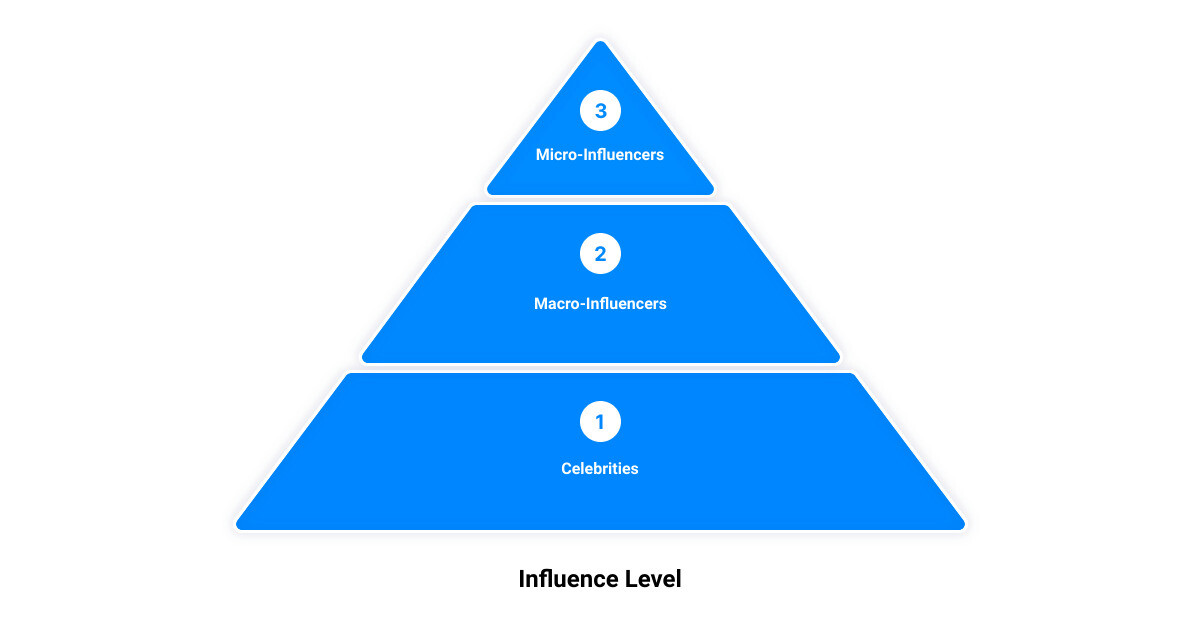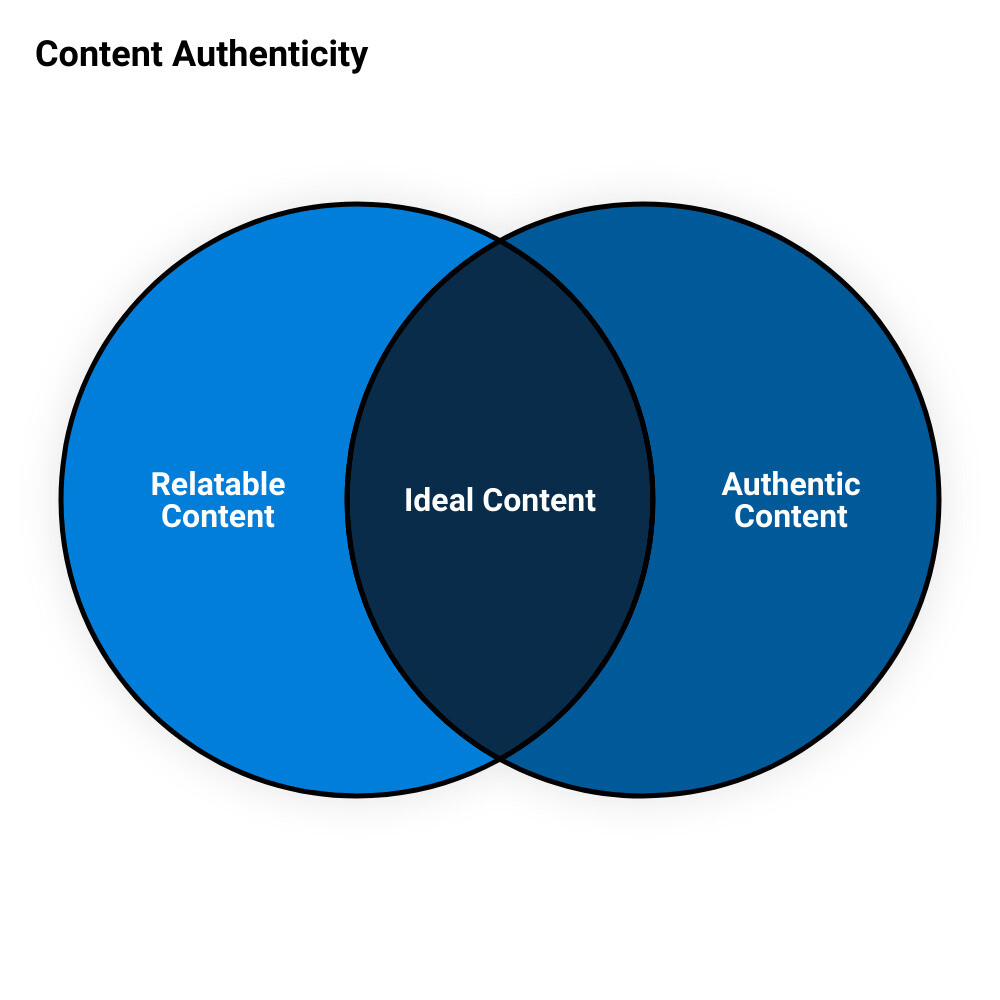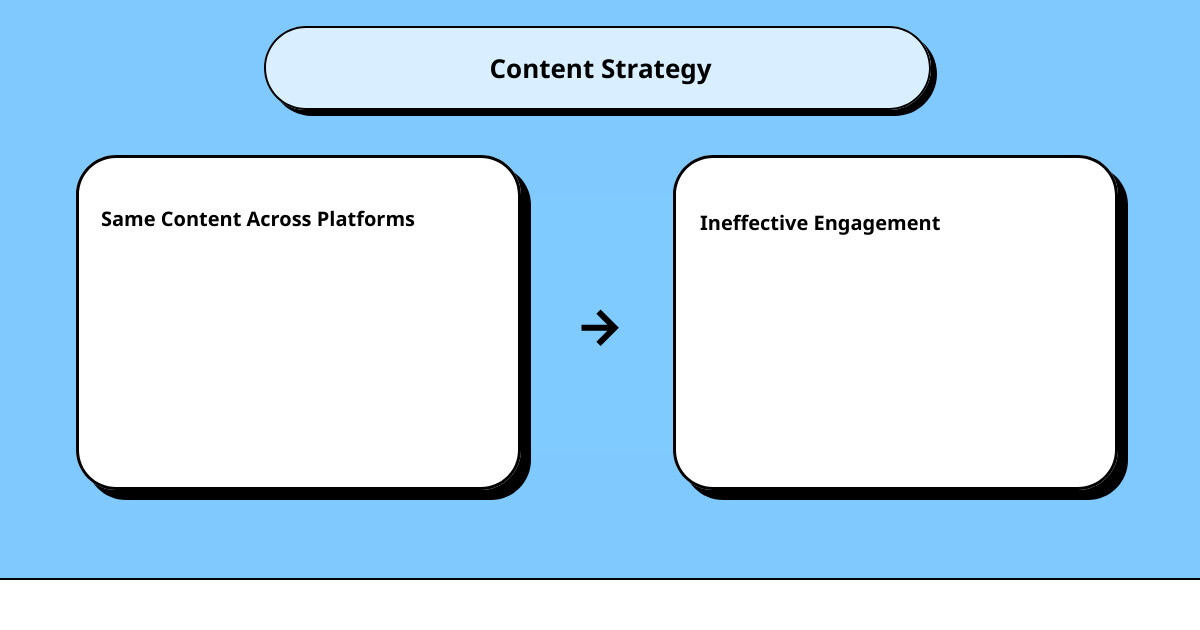Introduction: The Ever-Changing Landscape of Social Media Marketing
In the ever-evolving world of social media marketing, the only constant is change. As the digital landscape continues to shift, current social media marketing trends become the compass that guides brands towards success. Whether you're a small business owner, a digital marketing head, or a seasoned social media strategist, staying on top of these trends is essential to navigate the intricate maze of social media and drive impactful results.
In the recent past, we've seen the rise and fall of various social media trends. From the dominance of short-form videos to the shift towards authenticity and relatability in content, the social media landscape is rich with opportunities for brands to connect, engage, and grow their audience. However, the challenge lies in identifying these trends and harnessing them effectively to drive your brand's objectives.
Today, almost 57% of social media marketers are under scrutiny regarding their budget allocation and the ROI it generates. Yet, an overwhelming 91% remain confident about the returns their social media activities will yield. This confidence stems from their ability to adapt to trends, understand online consumer behaviors, and make data-driven decisions.
Furthermore, our survey indicates a significant shift in content strategy. A mere 17% of marketers are cross-posting the same content across platforms. Instead, the majority are opting for a more tailored approach, tweaking content to suit different platforms or even starting from scratch each time.
In this article, we will dive deep into these emerging trends, exploring how they're shaping the future of social media marketing. More importantly, we'll discuss how SocialSellinator, a leader in digital marketing services, can help your brand stay ahead of the curve, leveraging these trends to drive growth and success in this ever-evolving landscape. So, let's get started and unveil the hottest social media marketing trends that you need to watch out for!

The Rise of Micro-Influencers Over Celebrities
Suddenly, it's not the Hollywood A-listers or globally renowned athletes that brands are vying to collaborate with but rather, individuals with a more modest following. Yes, we're talking about micro-influencers.
Why Micro-Influencers are More Effective
Micro-influencers, those with a follower count ranging from 1,000 to 99,999, are rapidly becoming the preferred choice for marketers. But why? The answer is simple: they provide access to engaged, tight-knit communities, and they do so with a much more affordable price tag.
Around 80% of influencer marketers are now opting to collaborate with these smaller creators, as compared to a mere 16% who are still targeting accounts with over a million followers[^1^]. This shift in preference is rooted in the realization that a massive follower count is no longer the main allure; instead, today's marketers are valuing quality content and brand alignment.
Moreover, a staggering one-third of social media users prefer discovering new products on social media through an influencer. This figure is even higher among Gen Z users. Therefore, while influencer marketing as a strategy is not going anywhere, the influencers who hold the most value definitely have shifted.
How to Leverage Micro-Influencers for Your Brand
For businesses, especially small-to-midsize ones, this shift towards micro-influencers offers a golden opportunity. Micro-influencers can help increase your brand's visibility, build trust and credibility, and significantly enhance your reach[^2^].
The key to success lies in finding micro-influencers who align closely with your brand values and have a strong community in your specific niche[^3^]. Instead of merely focusing on their follower count, consider their engagement rate, the quality of their content, and their audience demographics. Remember, the goal is not just to reach a larger audience but to reach the right audience.
Once you've identified potential micro-influencers, initiate a conversation about a possible collaboration. This could range from product reviews or giveaways to sponsored posts or long-term partnerships.
By effectively leveraging micro-influencers, you can tap into their engaged audience, increase your brand's visibility, and create authentic and meaningful connections with potential customers. It's a win-win situation where you get to boost your brand's performance while supporting small creators. Now, that's what we call smart social media marketing!
[^1^]: What are Social Media Influencers [Updated] [^2^]: Effective Social Media Services for Small Business Success [^3^]: What are Social Media Influencers [Updated]

The Dominance of Short-Form Video Content
In the fast-paced world of social media, where attention spans are shrinking, short-form video content reigns supreme. Brands that can master the art of bite-sized video storytelling are gaining a significant advantage. Let's delve deeper into this trend to understand why YouTube Shorts and Instagram Reels are so successful and how you can create engaging short-form video content.
The Success of YouTube Shorts and Instagram Reels
While TikTok has been leading the pack in short-form video content, other platforms aren't far behind. YouTube, the world's second most visited website, is giving TikTok a run for its money with its YouTube Shorts. In 2022, YouTube's daily average watch time was 45.6 minutes, just 0.2 less than TikTok. YouTube allows brands to plan a long-form video strategy, create evergreen content, and offers great repurposing possibilities[^@sendible].
Instagram Reels, on the other hand, is heavily prioritized by the platform's recommendation algorithm, making it a potent tool for marketers. Interestingly, Google Trends shows interest in Reels reaching all-time highs after the announcement that all videos on Instagram would be Reels (in July 2022)[^@sendible].
How to Create Engaging Short-Form Video Content
Creating short-form video content that resonates with your audience requires a well-thought-out strategy. Here are some steps to consider:
Understand Your Audience: Just like any other piece of content, you need to keep your audience in mind when creating short-form videos. What are their interests? What type of content do they engage with?
Invest in Equipment and Training: High-quality videos require good equipment and editing software. Train your team to use them effectively.
Create a Content Calendar: Plan your content around campaigns, launches, holidays, and other important dates.
Leverage Creator/Influencer Partnerships: Collaborate with influencers who align with your brand and can bring authenticity to your content.
Test and Optimize Your Content: Use data and audience feedback to continuously improve your videos.
Repurpose Top-Performing Videos: To save time and resources, clip, remix, and distribute your best videos across different platforms[^@sendible].
Remember, whether you're using YouTube Shorts, Instagram Reels, or any other short-form video platform, the key is to provide value to your audience. So, make sure each video is informative, engaging, and aligns with your brand's personality.
In the next section, we'll discuss the shift towards authentic and relatable content, another trend that's shaping the social media marketing landscape. Stay tuned!

The Shift Towards Authentic and Relatable Content
In the realm of social media marketing, the days of polished, picture-perfect content are fading. Instead, a new wave of authenticity and relatability has swept the digital landscape, leading to a significant shift in how brands interact with their audience.
The Importance of Brand Authenticity in Social Media Marketing
As an expert in SEO and digital marketing, one thing is clear: authenticity isn't just a buzzword—it's a beacon that draws in your target audience. Today's consumers are savvy; they seek out genuine connections and meaningful interactions. They're no longer interested in one-way communication or overly promotional content. They crave real, authentic exchanges that resonate with their needs and aspirations.
Brands that are transparent and authentic in their social media marketing are reaping the rewards. The Edelman Trust Barometer reveals that 81% of consumers say trust in a brand is a deciding factor in their purchasing decisions. Further, according to Stackla, 79% of people say user-generated content (UGC) highly impacts their purchasing decisions, solidifying the importance of authentic user experiences in marketing strategies.
Examples of Successful Authentic and Relatable Content
The power of authenticity is evident in the success of various brands across different platforms. LinkedIn, for instance, saw a shift in content creation with an increase in linkless and personal posts, a testament to the platform's commitment to fostering genuine human connections. They even invested $25 million in a Creator Fund, recognizing the value of authentic content in building an engaged community.
Talia Mar, a creator on BeReal, a social media app, encapsulates this trend perfectly. She tweeted, "I bloody love BeReal, it’s so nice posting on an app to genuinely connect with people and see what everyone’s doing and not worry about engagement." The emphasis here is not on promotional content but authentic interactions that foster meaningful relationships.
Brands are also leveraging the power of storytelling, humanizing their brand through engaging narratives that emotionally connect with their audience. This approach, backed by a data-driven strategy, fosters trust and loyalty, moving beyond vanity metrics and focusing on genuine, long-term engagement.
In the ever-evolving world of social media marketing, one thing remains constant: the need for authentic, relatable content. As we move forward, brands that prioritize genuine connections and meaningful interactions will undoubtedly stay ahead of the curve. In the next section, we'll delve into the emergence of Social SEO and Social Search, another game-changing trend in the digital marketing landscape.
The Emergence of Social SEO and Social Search
From the depths of the digital ocean rises a new titan in the world of social media marketing: Social SEO and Social Search. A term that might sound like tech jargon to many, but when decoded, it reveals the future of online visibility and brand presence.
Understanding Social SEO and Its Importance
Social SEO refers to the practice of optimizing your social media profiles and content to improve their visibility on search engines. It's no longer only about having a website that ranks high on Google. SocialSellinator's study reveals that most users now go directly to social media profiles for information, making Social SEO a key player in the game of online visibility.
Moreover, an effective Social SEO strategy can significantly increase your brand's reach, helping you tap into a global audience. This wider exposure can lead to higher engagement rates, increased sales, and ultimately, a strong online presence.
By not tapping into the power of Social SEO, you risk losing out on a vast pool of potential customers. But fret not, because optimizing your social media for search is simpler than you might think.
How to Optimize Your Social Media for Search
-
Choose the right keywords: Just like traditional SEO, keyword research is the backbone of Social SEO. Identify relevant keywords and hashtags related to your industry and include them in your posts and bio.
-
Make your username search-friendly: Your username should be easy to search for. Maintain a consistent username across all your social media profiles to help users find your brand easily.
-
Optimize your content: Use SEO-friendly captions and alt text for your images. This not only improves accessibility but also boosts your content's visibility on search engines.
-
Engage with your audience: Search engines love engagement. Respond to comments, share user-generated content, and interact with your followers to boost your social signals.
-
Regularly update your profiles: Keeping your social media profiles updated with fresh, relevant content is key to staying visible. Regular updates indicate that your profile is active and relevant, which can boost your rankings.
By leveraging Social SEO, you can stay ahead of the curve and ensure your brand remains visible in the ever-evolving digital landscape. With SocialSellinator's expertise in this domain, navigating these waters becomes a breeze. Next, we'll delve into the future of social media marketing trends - the rise of e-commerce and direct messaging.

The Future of Social Media: E-commerce and Direct Messaging
As we dive into the future of social media, two significant shifts are shaping the landscape: the growth of social commerce and the rise of direct messaging as a primary customer service channel. These trends highlight the evolution of social media platforms from mere communication and entertainment tools to comprehensive business solutions.
The Growth of Social Commerce and In-App Purchases
Social commerce is the new frontier of online shopping, and it's poised to redefine the e-commerce landscape. In 2022, we witnessed a significant uptake in shopping on social media platforms. Instagram, for instance, made it easy for users to make in-app purchases through shopping tabs and "save later" buttons, effectively transforming the product discovery process.
For consumers aged 18 to 54, social media is their preferred channel for finding new products, with more than one in five Gen Z, Millennial, and Gen X social media users making a direct in-app purchase in the past three months.
However, it's not just consumers who are embracing this trend. Social media marketers are also reporting a notable increase in in-app sales. More strikingly, about 80% predict that consumers will soon purchase products more often on social apps than on brands' websites or third-party platforms like Amazon.
While these statistics are impressive, it's essential to note that many consumers are still hesitant about purchases through social media. Notably, only 41% of social media users feel comfortable making purchases on these platforms, and a mere 37% trust these platforms with their card information. The main concerns revolve around the brand's legitimacy, ability to get a refund, and product quality.
Despite these concerns, Instagram stands out as the go-to platform for in-app purchases, offering the best shopping experience.
The Rise of Direct Messaging as a Customer Service Channel
The future of customer service lies in Direct Messages (DMs). In recent times, around one in five Gen Z, Millennial, and Gen X social media users have contacted a brand through DMs for customer service. Interestingly, 84% of social media marketers predict that DMs will become consumers' preferred customer service channel in 2023.
Most brands are prepared for this shift, with 76% of social media marketers stating their company offers customer service via social media, and 42% citing that providing customer service through DMs is a primary responsibility of their job.
The trend towards DMs for customer service presents an opportunity for businesses to develop a plan for funneling customer service requests via social media through the proper channels, thus enhancing the overall customer experience.
The dawn of social commerce and the rise of DMs as a customer service channel is a testament to the dynamic nature of social media marketing. As a head of marketing or digital marketing, it's crucial to stay ahead of these trends to maintain a competitive edge. SocialSellinator is well-equipped to help you navigate these changes, ensuring your brand remains relevant in this ever-changing landscape.

The Importance of Platform-Specific Content Strategy
In the era of smart social media marketing, one-size-fits-all is a strategy of the past. Today, it's all about personalization and customization. Brands need to create content that is tailored to the specific platform it's shared on to effectively engage their audience.
Why Re-sharing the Same Content Across Platforms is Ineffective
Re-sharing the same content across different social media platforms might seem like a time-saving trick, but it can prove to be a costly shortcut. Each platform has its unique set of user demographics, behaviors, and preferences. A post that works wonders on Instagram might not resonate the same way on LinkedIn.
Not only does this approach fail to capitalize on the unique features and strengths of each platform, but it also risks alienating your audience. Users expect content that is tailored to the platform they are using. Seeing the same post across multiple platforms could lead to content fatigue, causing your audience to disengage.
As found in a survey, only 17% of marketers are cross-posting the exact same content across social media platforms. It's clear that most marketers are moving away from this approach and leaning into a more tailored strategy.
How to Create a Platform-Specific Content Strategy
Creating a platform-specific content strategy starts with understanding the distinctive characteristics and strengths of each platform. Facebook might be great for sharing long-form content and fostering community discussions, while Instagram could be more suitable for visually appealing content.
Next, it's crucial to understand your audience on each platform. What kind of content do they engage with the most? What are their behaviors and preferences? Use the insights available on each platform to inform your content strategy.
When creating content, consider the format that works best for each platform. For instance, short videos might perform well on TikTok, while in-depth articles could be more suitable for LinkedIn.
Finally, measure the performance of your content on each platform and adjust your strategy as needed. What works today might not work tomorrow, so it's crucial to keep a close eye on performance metrics and continually adapt your strategy.
In summary, a platform-specific content strategy is all about understanding the unique features of each platform, knowing your audience, creating tailored content, and constantly measuring and adjusting your strategy. This approach requires more effort than simply cross-posting the same content, but the benefits make it worthwhile. Brands that adopt a platform-specific content strategy can expect to see higher engagement, better conversion rates, and ultimately, a stronger return on investment in their social media marketing efforts.
The Role of SocialSellinator in Navigating Current Social Media Marketing Trends
As the landscape of social media marketing continues to evolve, brands need a trusted partner to help them navigate these changes. This is where SocialSellinator steps into the picture, acting as a beacon in the dynamic digital marketing arena.
How SocialSellinator Helps Brands Stay Ahead of Social Media Marketing Trends
SocialSellinator is not your average digital marketing agency. They stay attuned to the pulse of the market, keeping an eye on emerging trends and using these insights to craft data-driven strategies that yield results. Whether it's the rise of micro-influencers, the dominance of short-form video, or the shift towards authentic and relatable content, SocialSellinator has the expertise and resources to help brands stay ahead of the curve.
By focusing on creating engaging, smart, and unique content, SocialSellinator helps businesses stand out in the crowded digital landscape. Their strategies are designed to amplify your brand message while delivering insightful and actionable content that resonates with your audience. This is paired with their focus on growing your network, connecting you with key buyers and decision-makers to boost sales and increase revenue.
But the cherry on top? SocialSellinator's strategies are not only attuned to current trends but also future-proof. This means they're designed to adapt and remain effective even as social media trends evolve, ensuring your brand remains at the forefront of the digital marketing space.
The Comprehensive Digital Marketing Solutions Offered by SocialSellinator
SocialSellinator offers a suite of comprehensive digital marketing services tailored to meet the unique needs of small to midsize businesses. Their social media management services are designed to grow your brand's online community and engage with the right audience. They handle every aspect of this, from content curation to comment management, ensuring your social media presence is both active and effective.
Beyond social media, their blog writing and content marketing services help create a robust foundation for all your marketing campaigns. Whether you're focusing on search engine efforts, social media management, paid traffic, or influencer campaigns, SocialSellinator ensures your brand is represented in a positive and impactful way.
Their SEO services further enhance your online presence, boosting your Google ranking and driving demand generation. With their well-optimized Facebook and Google Ads management services, you can drive sales effectively. And with their LinkedIn lead generation strategies, you can attract potential customers in this age of inbound marketing.
In essence, SocialSellinator offers a holistic approach to digital marketing. They're not just keeping up with the trends—they're helping businesses like yours set them. So if you're ready to stay ahead of the curve in social media marketing, make SocialSellinator your next strategic move.
Conclusion: Staying Ahead of the Curve in Social Media Marketing
Navigating the dynamic world of social media marketing can be as thrilling as it is challenging. The landscape is continually evolving, with new trends and technologies reshaping the way businesses connect with their audiences. However, staying ahead of the curve in this fast-paced environment is not just about keeping up with the latest trends but leveraging them effectively to enhance your brand's online presence.
In the realm of influencer marketing, the paradigm has shifted from celebrities to micro-influencers. These influencers, though they have a smaller follower base, offer more authentic engagement and better alignment with brand values. Besides, they're more affordable, offering a better ROI for marketers.
Short-form video content is another trend that has taken the social media world by storm. Platforms like TikTok and Instagram Reels have made this format popular, especially among Gen Z and Millennial audiences. As such, it's essential to incorporate short-form videos into your content strategy to ensure your brand resonates with these demographics.
The importance of authenticity can't be understated in today's digital age. Consumers are more inclined towards content that's relatable and genuine compared to high-production, polished posts. Therefore, creating content that reflects your brand's personality and values can help you connect more deeply with your audience.
Furthermore, the emergence of social SEO has underscored the importance of optimizing your social profiles for search. From including relevant keywords and hashtags to maintaining a consistent username across platforms, these strategies can boost your brand's visibility on social media.
Finally, as brands continue to explore the potential of social commerce and direct messaging, it's important to adapt your strategies accordingly. These trends offer opportunities to provide a seamless shopping experience and personalized customer service, respectively.
In this ever-changing landscape, SocialSellinator stands out as a reliable partner in your digital marketing journey. Leveraging data-driven strategies and focusing on authentic engagement, they help businesses tackle the challenges of the digital world head-on. With their comprehensive suite of services, SocialSellinator ensures that your marketing efforts align with the current trends and resonate with your target audience.
In conclusion, staying ahead of the curve in social media marketing requires constant learning, adaptation, and a bit of foresight. Embrace the change, look forward to the horizons yet unexplored, and always prioritize human connection in the digital age. And remember, with a trusted partner like SocialSellinator by your side, you're well-equipped to navigate the unpredictable yet exciting road ahead in social media marketing.





